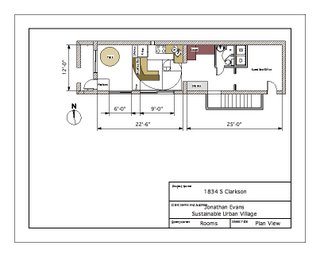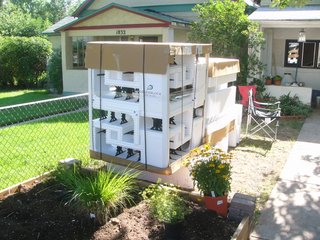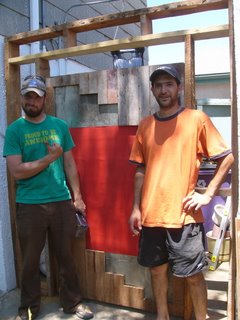Updated Floorplan

This is an updated picture of the floor plan. Zach and I have been grinding through the utility cellar and have thoroughly enjoyed working with the greenblocks and will soon be working above ground on forming the finished concrete slab. Mike, our engineer, came up with the great idea to pour our 4" insulated radiant slab directly on grade rather than suspending it on joists above a problematic, building-code intensive crawl space. Not only does this save resources mostly in the form of lumber, but it also allows us to raise and lower the final floor elevation without any more effort than what it takes to shovel the dirt (which is just a free workout as far as we're concerned). So we've opted to lower the dining room floor height about 7" below the kitchen floor height while finishing both surfaces and the step between them in polished and dyed concrete. The idea is to "compress" anyone entering the house when they stand on the entry platform so that the full effect of a ten foot ceiling in the dining room can be contrasted before stepping down.
The breakfast bar will act to divide the space between the dining room and the kitchen in an open floor plan concept. The diffierent elevations will allow for a nice, tall bar for visitors to saddle up to from the dining room side while also providing a sizeable countertop workspace for whoever is cooking. We designed the bar to follow a curve based on the Fibonacci sequence, a natural pattern that occurs in nature countless times in forms like a nautilus shell or a fern. We worked this into the design to give a nod to the concept of biomimicry - the idea of using nature as an ecological standard to judge the "rightness" of our innovations. After 3.8 billion years of evolution, nature has learned what works and it is our belief that such an intricate blueprint leads to aesthetic beauty.








